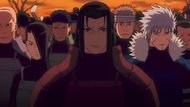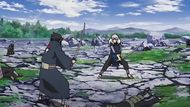The Naruto-verse is crammed with iconic shinobi who altered the path of history via their ideas and inventions. Within them, Tobirama Senju may be the most consequential mind to ever arise from the Hidden Leaf Village. His legacy as a groundbreaking ninjutsu inventor presents one key question: What made him such a visionary?
The Second Hokage, Tobirama Senju, invented three unorthodox techniques that transfigure Naruto's ninja arts: the Flying Raijin, Shadow Clone Jutsu, and Edo Tensei. His scientific direction to chakra and willingness to dig up forbidden techniques made him unmatched as a jutsu innovator.
On one hand, Hashirama was guided by his heart and emotions. On the other one, Tobirama leaned on cold reasoning and a sharp approach. His upbringing during the difficult Warring States era cultivated in him a beneficial, no-nonsense stance on life. This calculated thinking pushed him to invent some of the most advanced and controversial jutsu in the Naruto series—forever shaping the shinobi method.

Tobirama's ninjutsu innovations were unparalleled. He created the Flying Raijin Jutsu, a space-time technique that let him teleport immediately across the battlefield. This decisive ability was later perfected and famously utilized by Minato Namikaze, the Fourth Hokage.
It was the Second Hokage who created the Shadow Clone Jutsu—an advanced technique that later defined Naruto Uzumaki’s fighting style. It also became one of his signature moves throughout the series. These weren't mere combat techniques. They represented fundamental advances in chakra application and control.
One of Tobirama’s most debated creations remains the Edo Tensei technique. This forbidden jutsu enabled the reanimation of the dead as immortal troopers. While devised as a wartime failsafe, this technique would later threaten the entire Naruto world when misused by villains like Orochimaru and Kabuto.

Edo Tensei revealed Tobirama’s readiness to delve into forbidden jutsu if it meant keeping the village safe. Its development showed his pragmatic belief that any tool could be justified if it protected the village.
Other Innovations of Tobirama Senju in Naruto
Tobirama established the Naruto world's foundational ninja systems. The Second Hokage created the Ninja Academy to standardize training. He instituted the Chunin Exams to identify talented shinobi.
Tobirama even formed the Anbu Black Ops for covert operations and established the Police Force to maintain order. He also introduced the democratic selection of Hokage leaders. These institutions standardized ninja training and village operations throughout the series. They created structure in what was previously a chaotic system.

The Second Hokage was the first to study the Sharingan scientifically. Tobirama’s studies on chakra elements and bloodline limits set the foundation for techniques used by shinobi long after his era. His analytical approach to ninjutsu development contrasted sharply with the series' later mystical elements.
Though often condemned for his outlook on the Uchiha, Tobirama Senju’s influence on ninjutsu is beyond dispute. His innovations reshaped chakra control and laid the groundwork for techniques that would safeguard the Hidden Leaf Village for years to come.
As the backbone behind Hashirama's heart, Tobirama Senju in Naruto truly was the architect of modern ninjutsu. His willingness to sacrifice everything for the village—even his own life in the First Ninja War—embodied the shinobi spirit that defines the series.
